Jun 21, 2024
•
Deft Team
Ready to bring a touch of elegance and glamor to your home? Discover the timeless allure of Art Deco interior design and transform your space into a stylish haven of sophistication!
Art Deco interior design, which originated in the 1920s and 1930s, is celebrated for its bold geometric patterns, luxurious materials, and glamorous decor. This interior design style, which embodies both opulence and modernity, has continued to influence contemporary design, making it a popular choice for those looking to add a touch of timeless elegance to their homes.
In this guide, we’ll explore the key characteristics of Art Deco design, offer practical tips for incorporating its elements into your home, and provide inspiration to help you achieve a stunning Art Deco interior.
What Is Art Deco Interior Design?
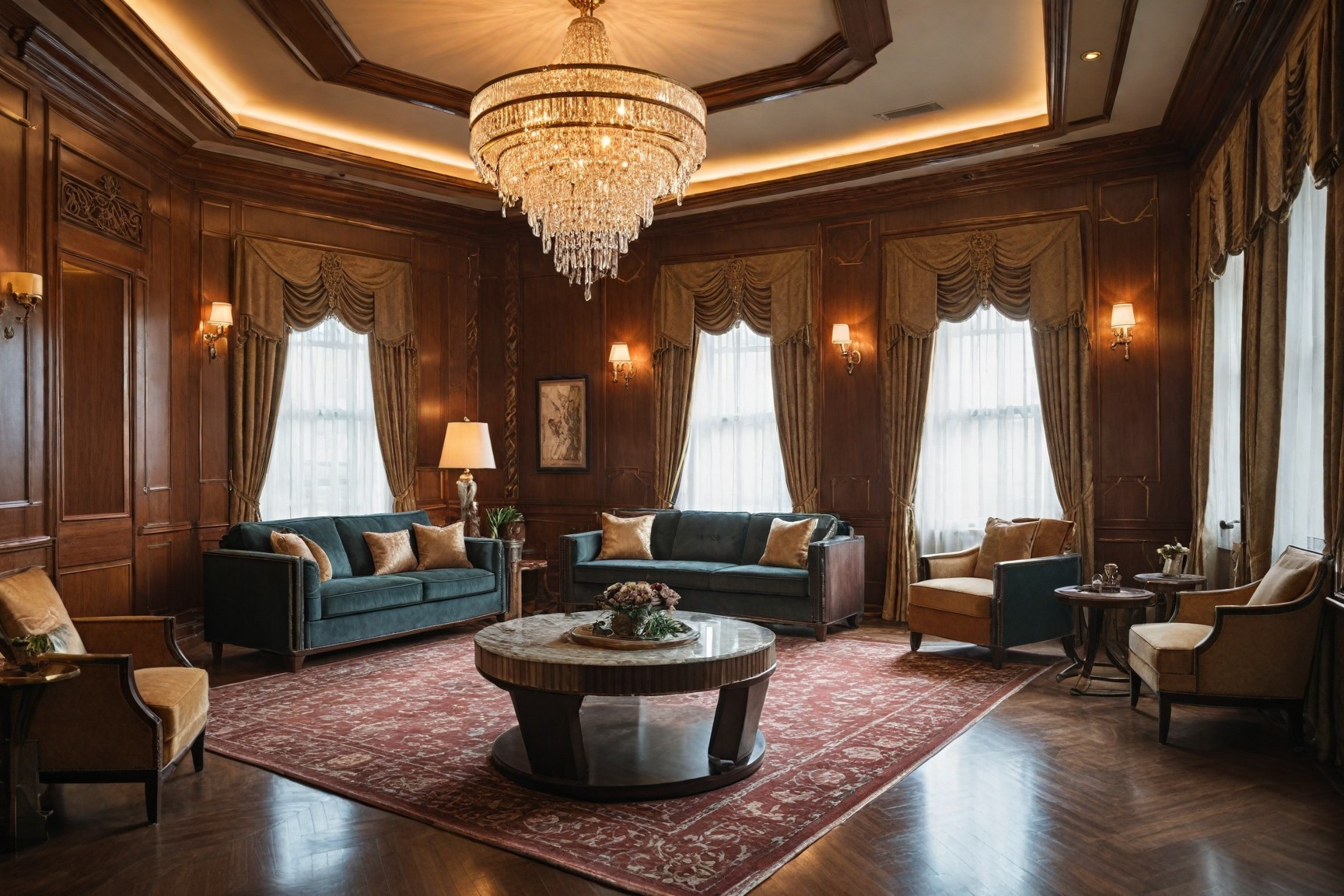
Art Deco interior design, also known as Style Moderne, emerged in the 1920s and 1930s as a celebration of luxury, glamor, and progress. This style is characterized by bold geometric patterns, rich colors, and lavish materials, creating an opulent and modern aesthetic.
Origins and Significance
Art Deco originated in France, particularly in Paris, during the 1920s and quickly spread across the globe. The style draws inspiration from a variety of sources, including ancient Egyptian and Aztec designs, Cubism, and the industrial revolution. It symbolizes the optimism and excitement of the post-World War I era, reflecting society’s fascination with technological advancements and newfound prosperity.
Influence on Contemporary Design
Art Deco has had a lasting impact on contemporary design, influencing everything from architecture to fashion. Its emphasis on geometric forms, symmetry, and luxurious materials continues to resonate in modern interiors. Elements of Art Deco can be seen in contemporary furniture, lighting, and decor, often blended with other styles to create a unique and sophisticated look.
Brief History and Cultural Background
The term "Art Deco" was derived from the Exposition Internationale des Arts Décoratifs et Industriels Modernes, held in Paris in 1925. This exhibition showcased the new style, which was characterized by its eclectic mix of traditional craftsmanship and modern technology. The movement gained popularity in the United States during the 1930s, influencing the design of skyscrapers, theaters, and even household items.
Art Deco design is marked by its use of bold geometric patterns, such as zigzags, chevrons, and sunbursts. It also incorporates luxurious materials like marble, chrome, glass, and lacquer, often with intricate inlays and veneers. The color palette is typically rich and vibrant, featuring shades of gold, silver, black, and deep jewel tones.
Key Characteristics of Art Deco Design
Art Deco design is known for its luxurious materials, bold geometric patterns, sleek surfaces, and emphasis on symmetry and repetition. Here are the core elements that define this glamorous style:
Use of Luxurious Materials
Art Deco design incorporates a variety of luxurious materials to create an opulent and sophisticated look. Common materials include gold, marble, exotic woods, chrome, and glass. These materials are often used in combination to enhance the richness and depth of the design.
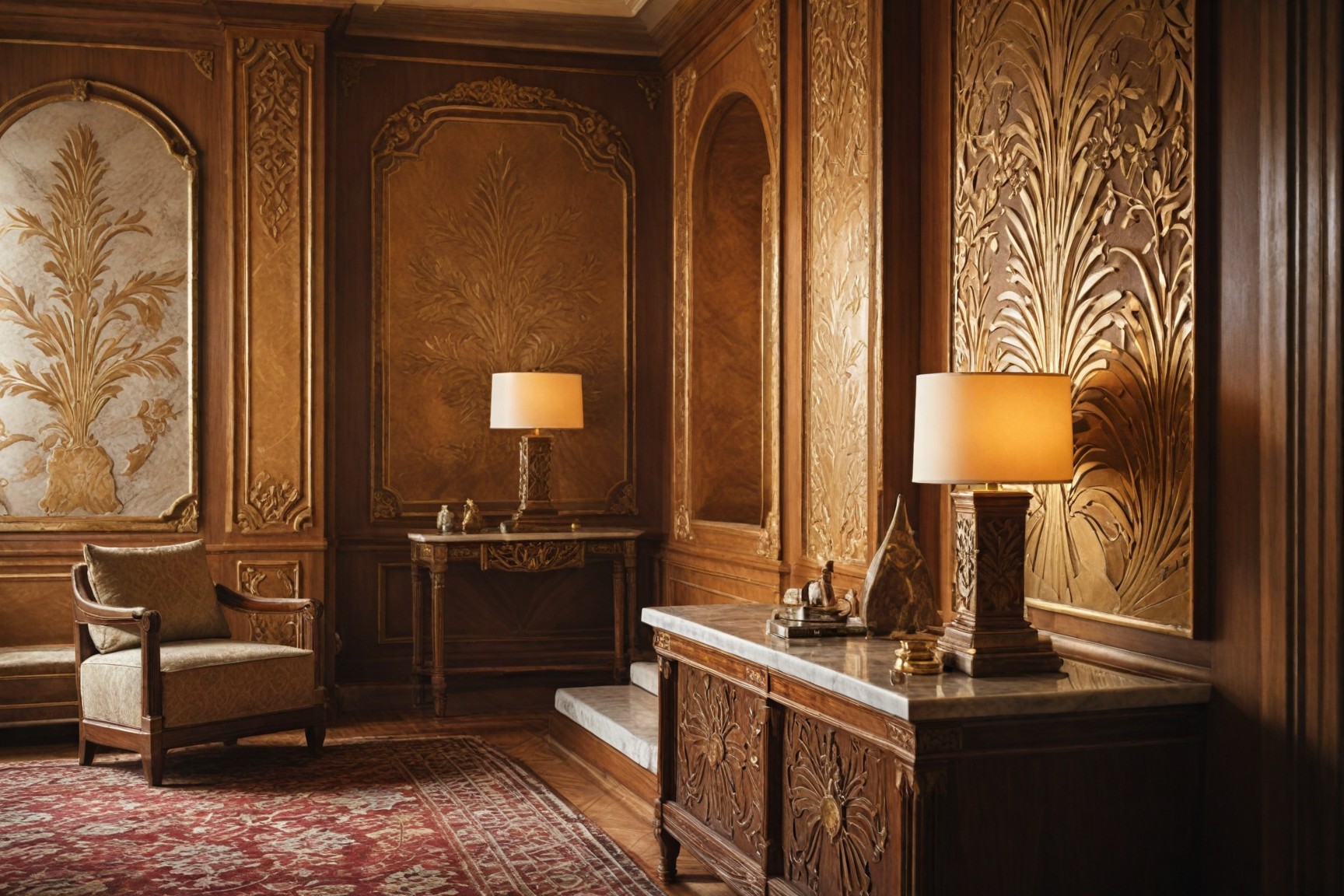
Examples of Luxurious Materials in Art Deco Interiors:
Gold accents and fixtures to add a touch of glamor.
Marble countertops and flooring for a classic, elegant appearance.
Exotic woods like ebony and zebrawood used in furniture and paneling.
Bold and Geometric Patterns
Bold geometric patterns and motifs are a hallmark of Art Deco design. These patterns include zigzags, chevrons, sunbursts, and other angular designs that create a sense of movement and dynamism. They can be found in various elements of interior design, such as wallpaper, flooring, and textiles.
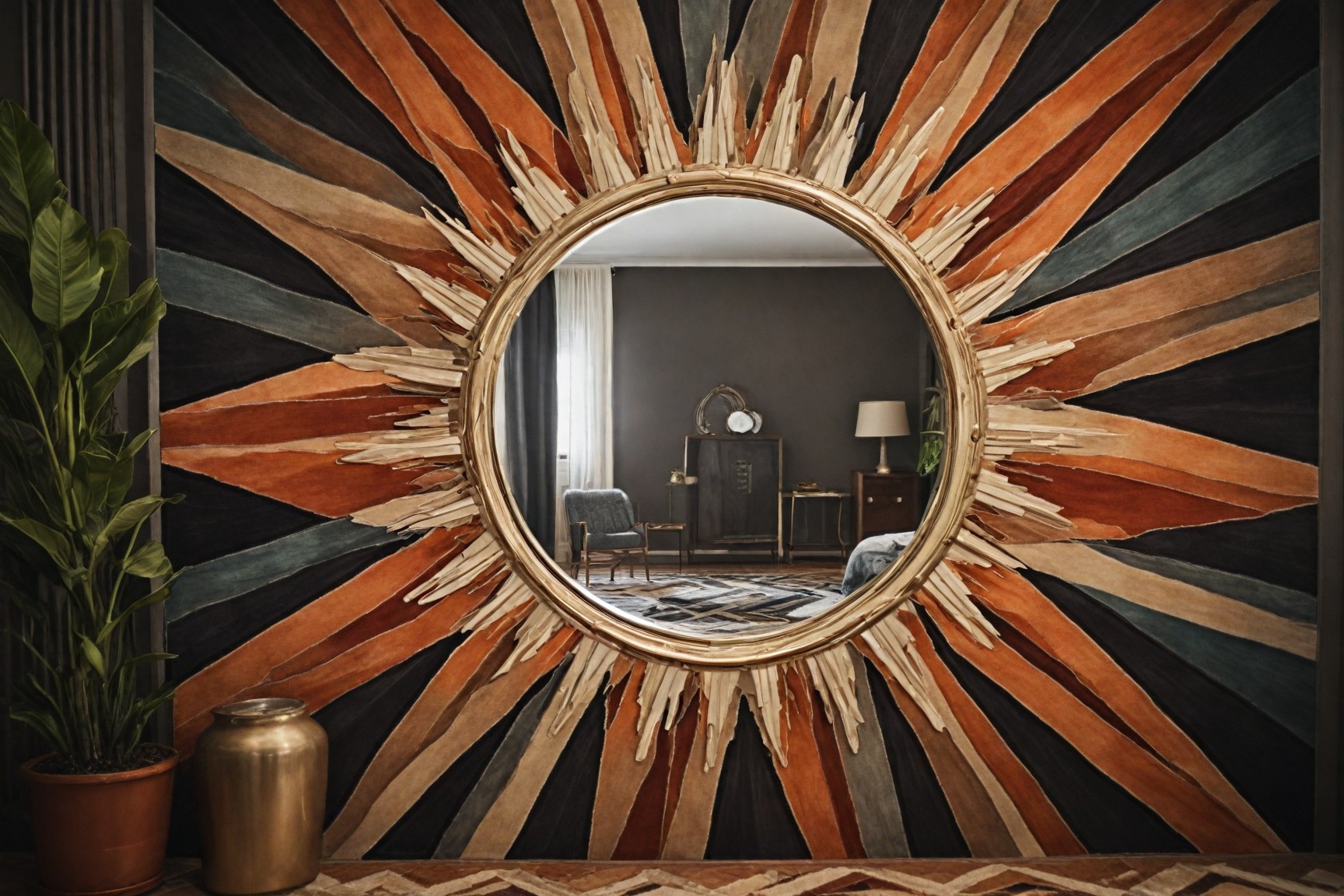
Tips for Incorporating Geometric Patterns:
Use geometric-patterned wallpaper to make a bold statement.
Incorporate patterned rugs and cushions to add visual interest.
Choose furniture with angular shapes and details.
Sleek and Shiny Surfaces
Shiny surfaces like chrome, glass, and mirrors are commonly used in Art Deco design to create a sleek and glamorous look. These reflective surfaces enhance the overall brightness and elegance of the space.
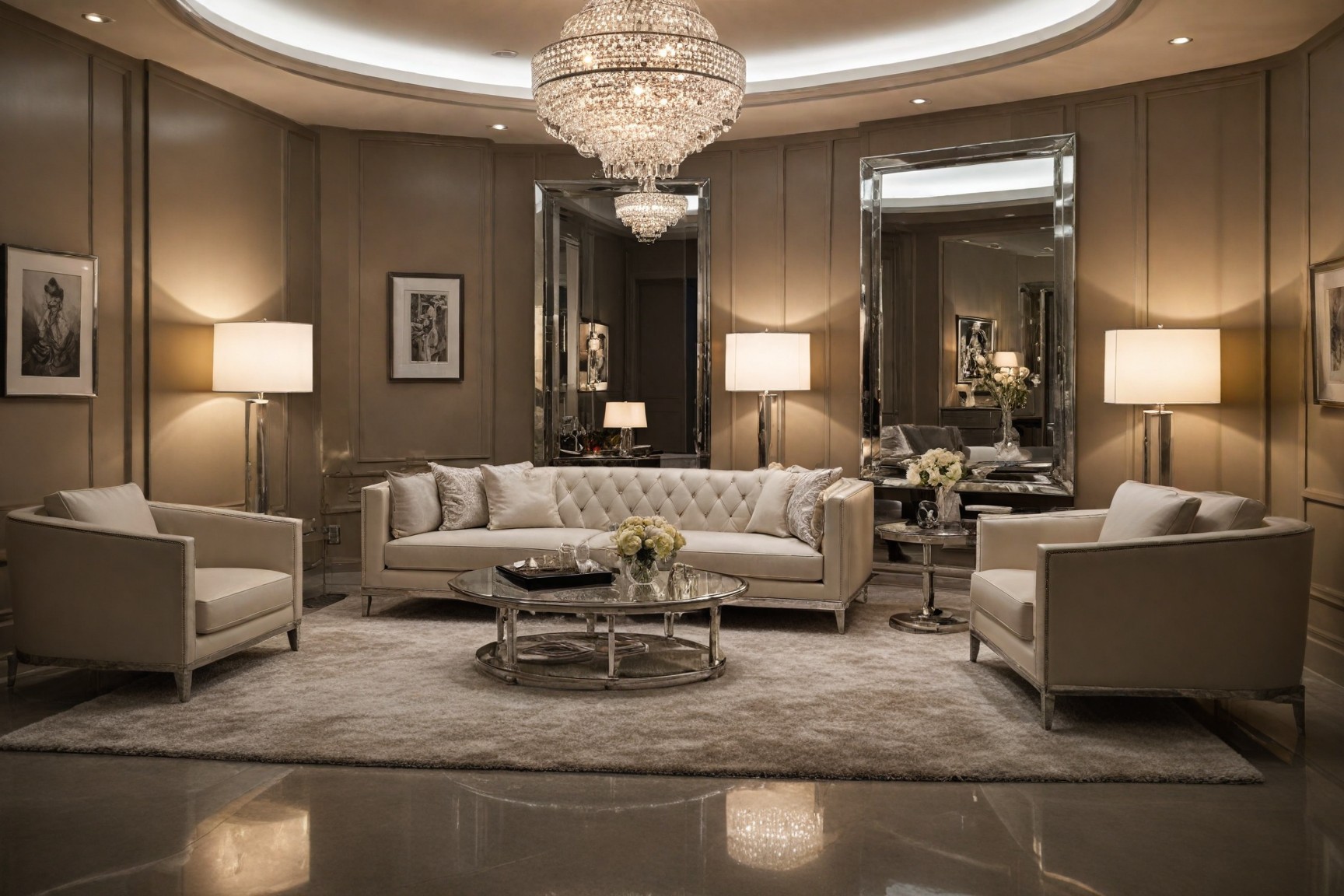
Tips for Achieving a Sleek and Glamorous Look:
Use mirrored furniture and decor items to reflect light and create a sense of space.
Incorporate chrome fixtures and accents for a polished, modern appearance.
Use glass tables and accessories to add a touch of sophistication.
Symmetry and Repetition
Symmetry and repetition are important elements of Art Deco design, creating a sense of order and balance. These principles can be applied to various aspects of interior design, including furniture arrangement, decor placement, and architectural details.
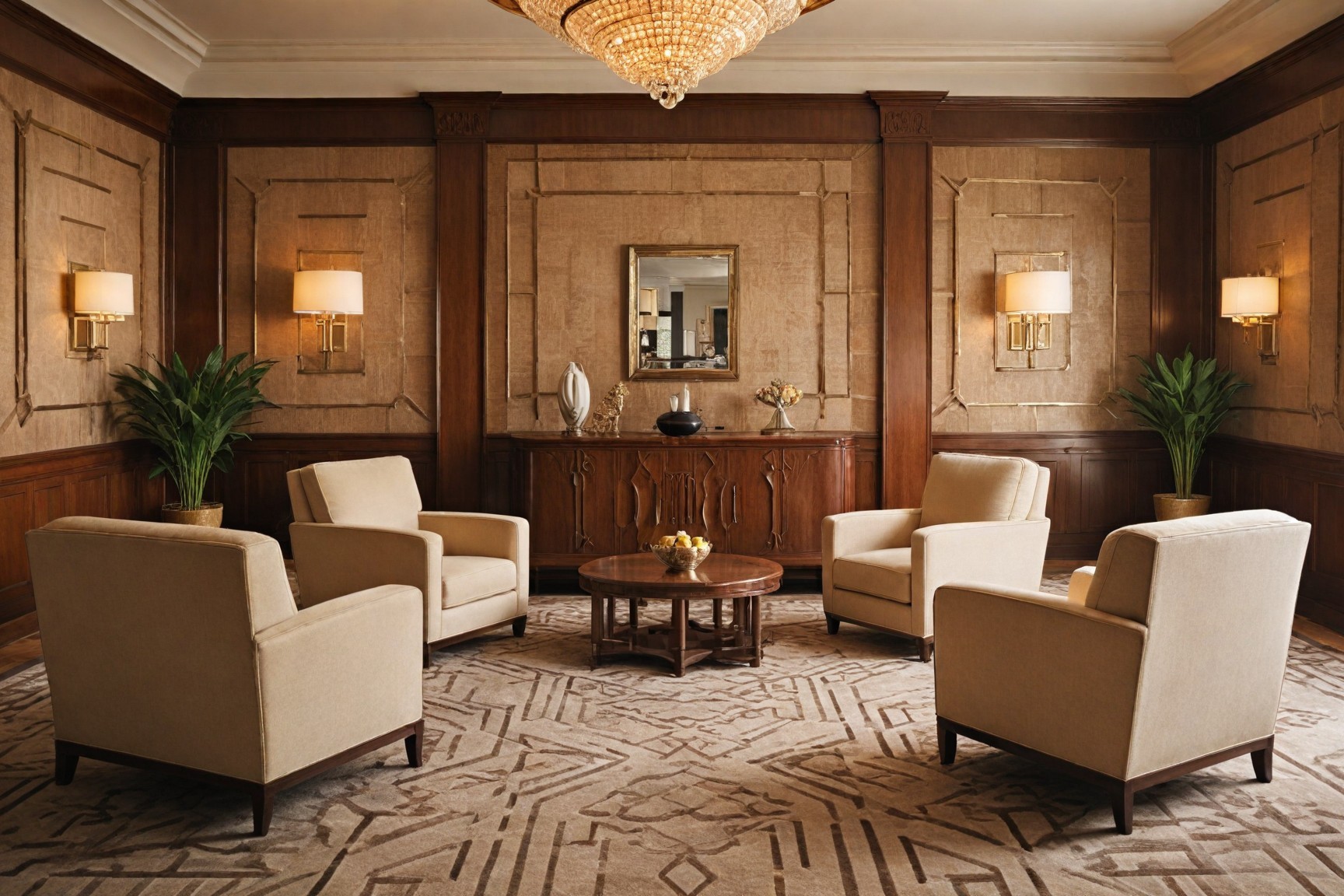
Examples of Symmetry and Repetition in Art Deco Decor:
Arranging furniture symmetrically around a central focal point.
Using repeated geometric patterns in wallpaper and textiles.
Incorporating symmetrical architectural details, such as moldings and paneling.
Practical Tips for Achieving Art Deco Design
Creating an Art Deco-inspired interior involves integrating the luxurious and bold characteristics of this iconic style. Here are some practical tips to help you achieve the perfect Art Deco look in your home:
Incorporating Art Deco Furniture
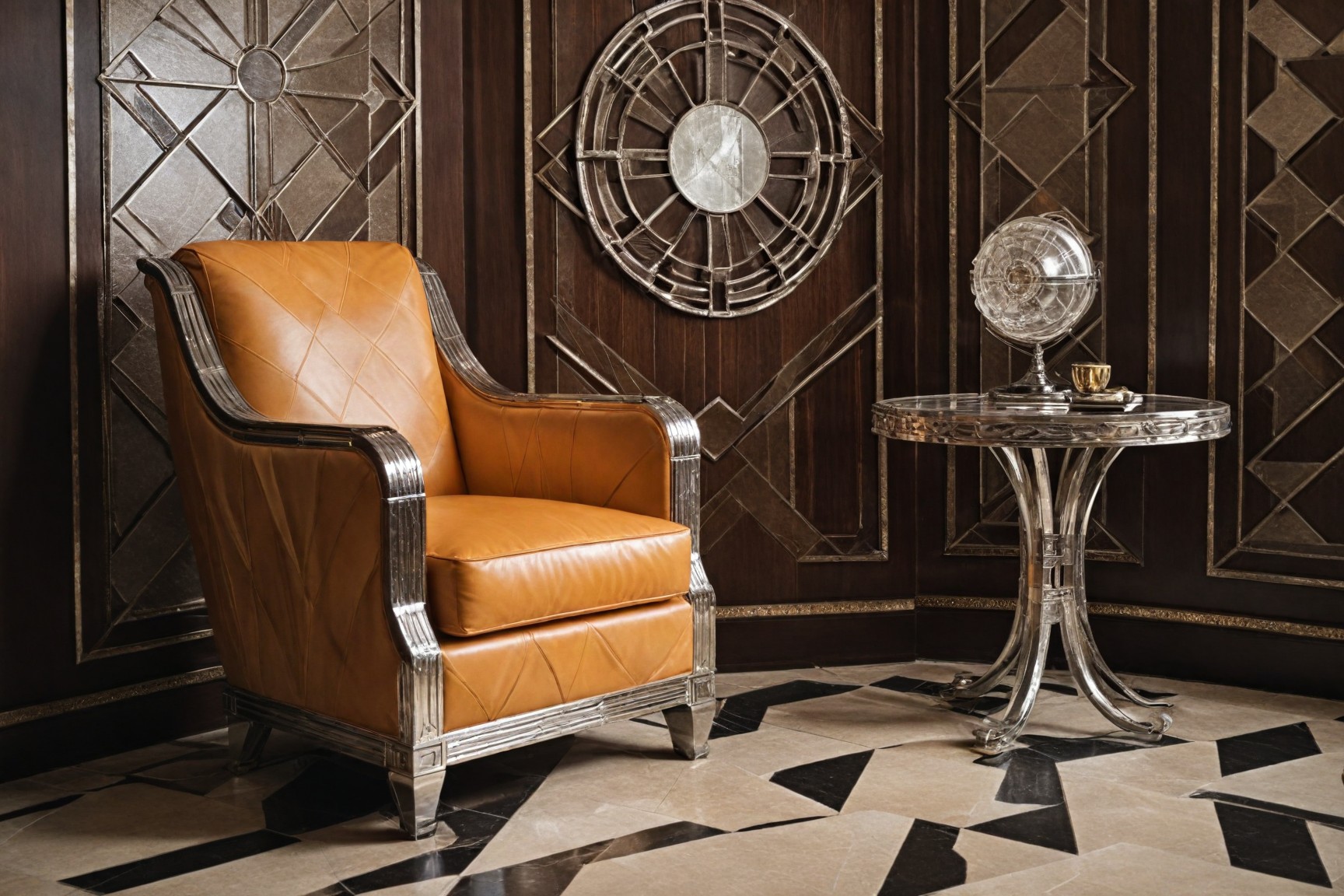
Art Deco furniture is distinguished by its sleek lines, luxurious materials, and bold geometric shapes. When selecting pieces, focus on items that embody these characteristics, such as curved sofas, mirrored side tables, and inlaid wood cabinets. Iconic Art Deco furniture often features exotic materials like ebony, ivory, and lacquered finishes, which contribute to the overall opulence of the design.
Choosing the Right Color Palette
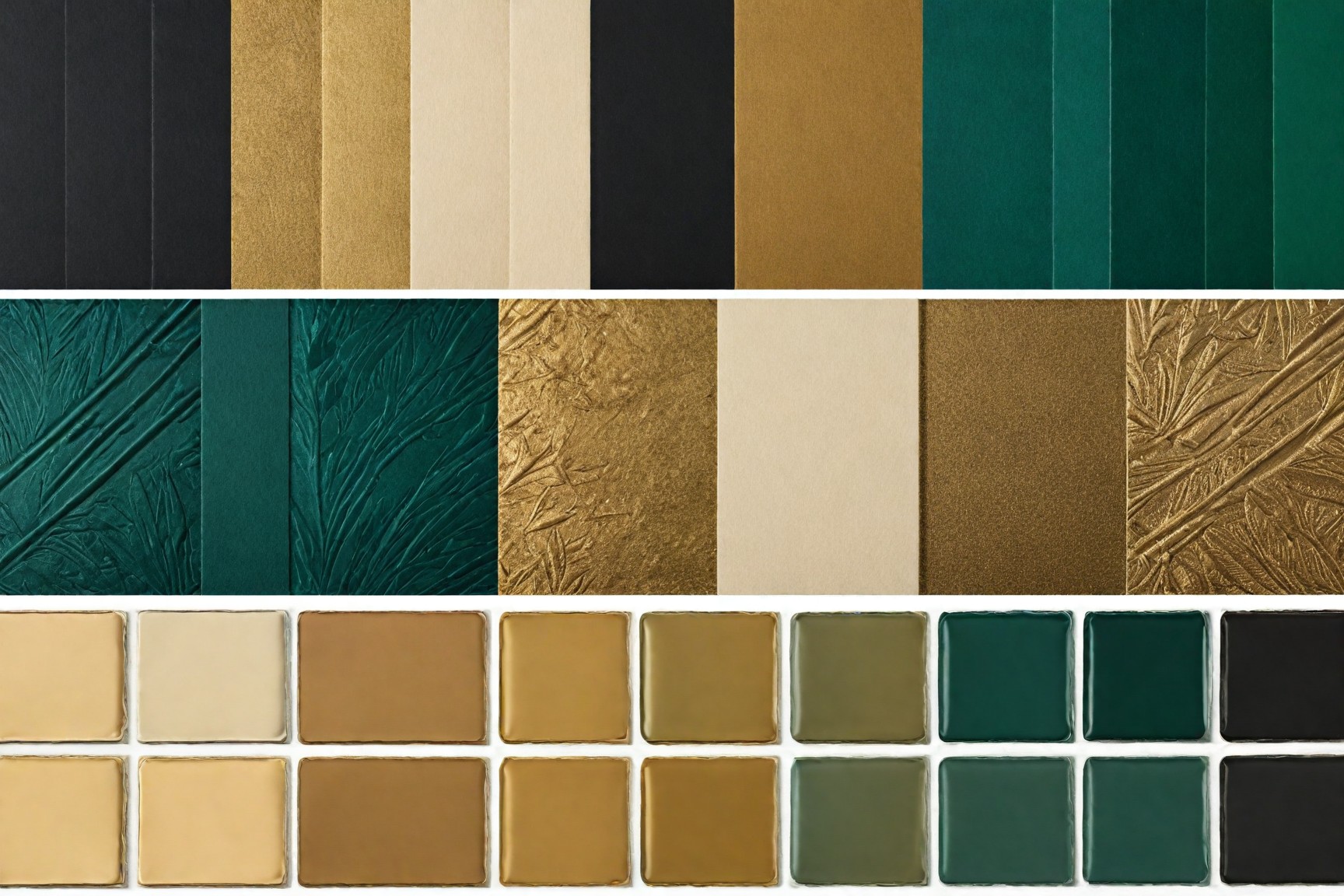
The Art Deco color palette is bold and glamorous, featuring deep jewel tones like emerald green, ruby red, and sapphire blue, often paired with metallics and neutrals. These contrasting colors create a striking visual impact.
Creating a Cohesive Color Scheme: To achieve a cohesive Art Deco look, start with a neutral base and add pops of bold colors through accessories and decor. Metallic accents, such as gold or chrome, can add a luxurious touch to the space.
Incorporating Art Deco Lighting
Lighting plays a crucial role in Art Deco design, often serving as a statement piece in the room. Look for chandeliers, sconces, and table lamps that feature geometric shapes, luxurious materials, and intricate details.
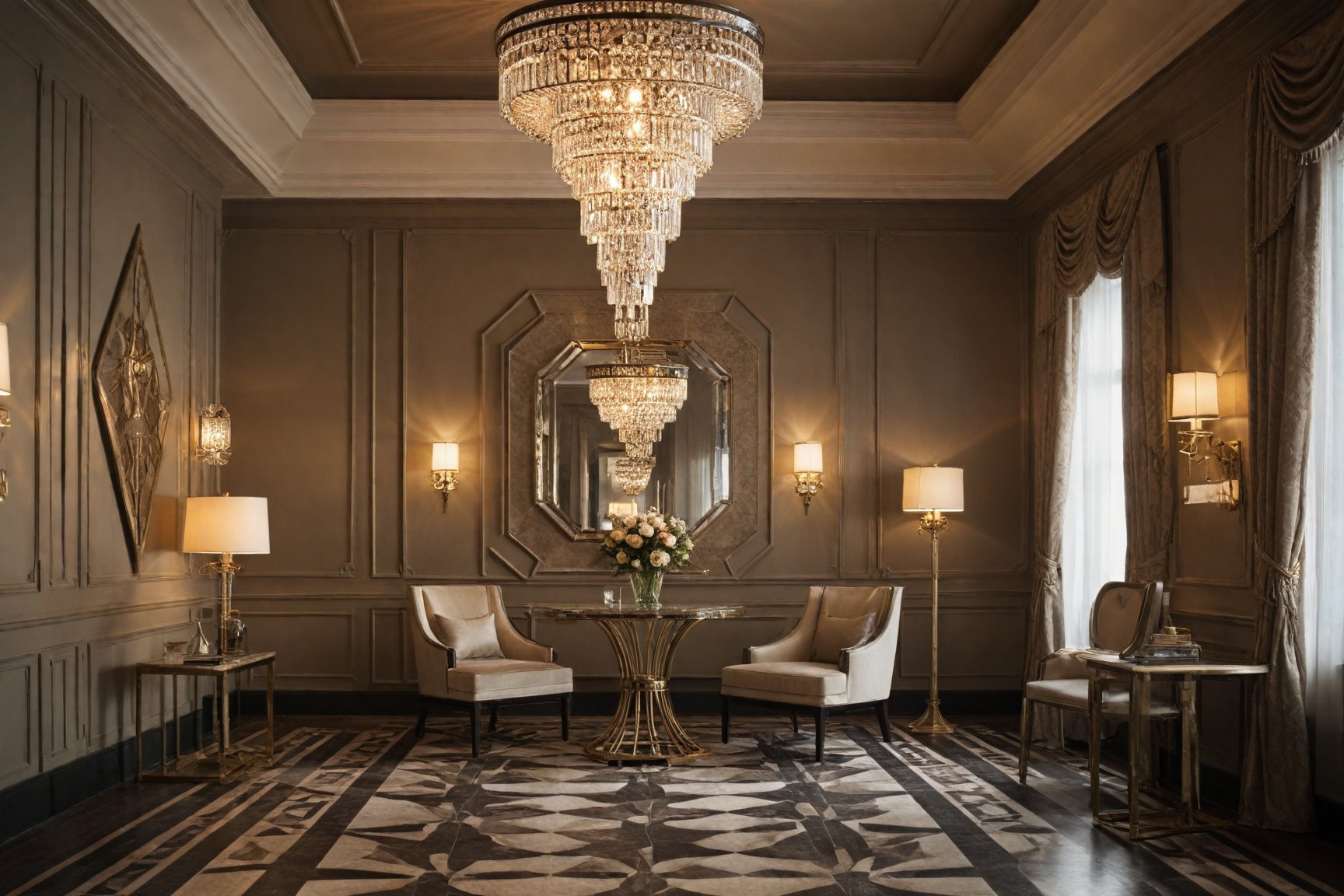
Tips for Selecting Art Deco Lighting:
Use chandeliers with crystal or glass elements to create a focal point.
Install sconces with sleek, metallic finishes to enhance ambient lighting.
Choose table lamps with bold, decorative bases and shades.
Adding Art Deco Accessories
Accessories are essential for completing the Art Deco look. Mirrors with bold frames, vases with geometric patterns, and artwork depicting scenes from the Jazz Age or abstract designs are all great choices.

Tips for Selecting and Arranging Art Deco Accessories:
Arrange accessories in symmetrical groupings to create balance.
Use mirrors strategically to reflect light and add depth.
Choose pieces with geometric shapes and luxurious materials.
By following these practical tips, you can transform your home into an elegant and glamorous Art Deco haven, capturing the essence of this timeless design style.
Influence of Art Deco on Modern Design
Art Deco has left a lasting legacy on contemporary design trends, influencing various aspects of interior decor, architecture, fashion, and even graphic design. Its emphasis on luxury, bold geometric patterns, and elegant materials continues to inspire modern aesthetics.
Contemporary Design Trends Inspired by Art Deco
Geometric Patterns and Shapes
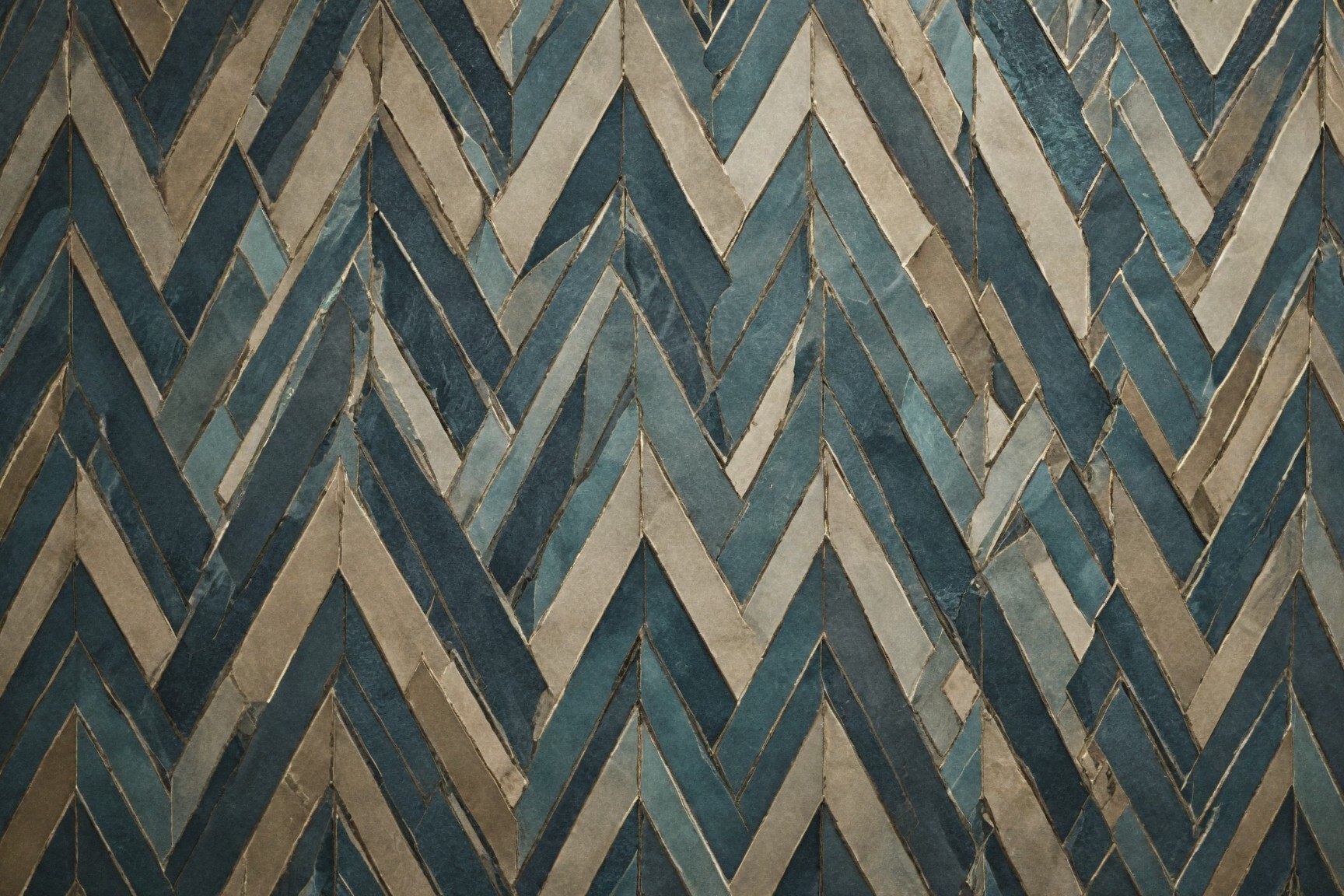
Modern design often incorporates geometric patterns and shapes reminiscent of the Art Deco era. These can be seen in wallpaper, flooring, textiles, and even furniture. Bold zig zags, chevrons, and sunburst motifs are frequently used to add visual interest and a sense of movement to contemporary interiors.
Luxurious Materials

The use of luxurious materials such as marble, brass, and mirrored surfaces in modern interiors is a direct nod to Art Deco's opulent style. These materials are used to create a sense of sophistication and elegance in contemporary spaces.
Streamlined Furniture
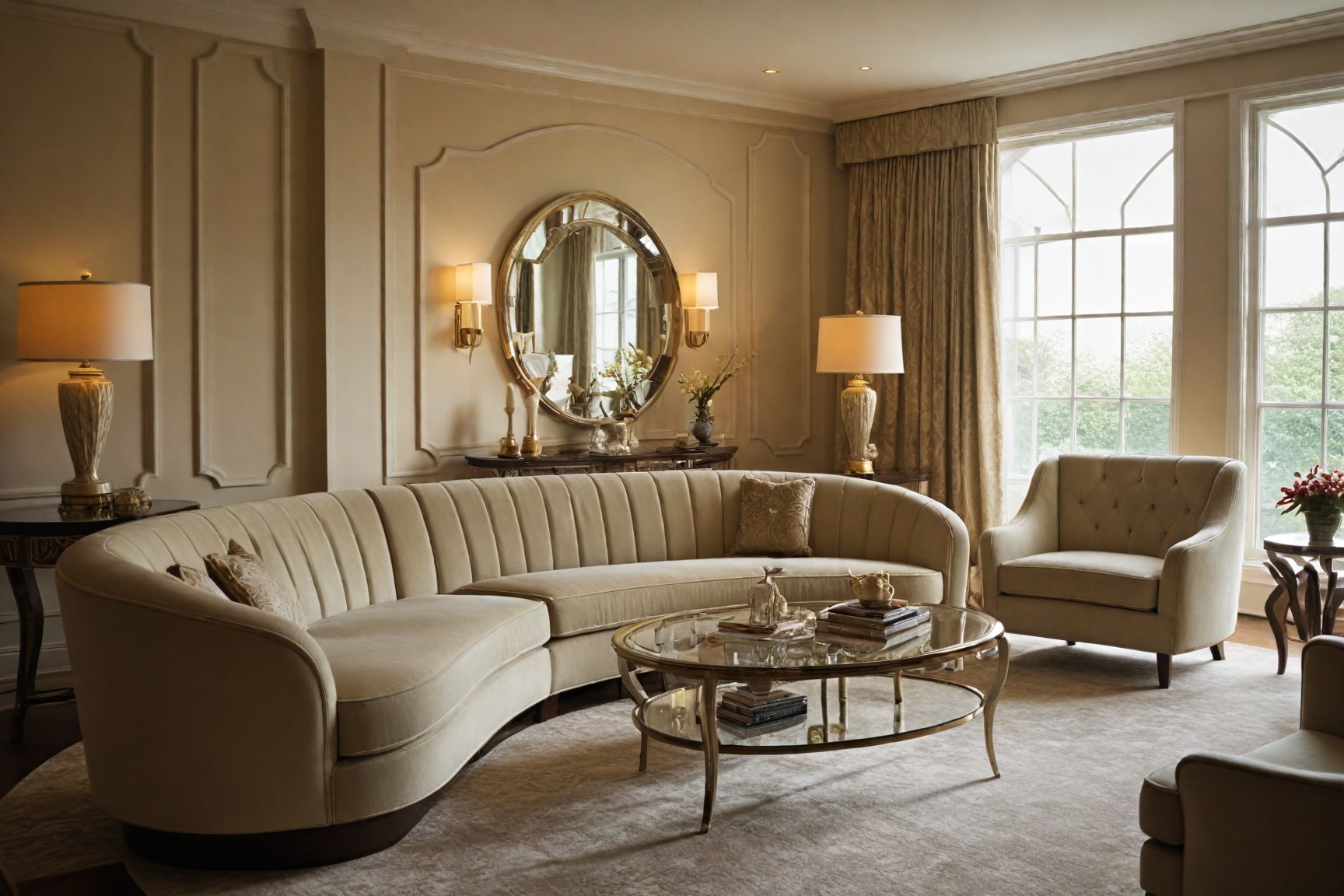
Modern furniture often features the sleek lines and streamlined shapes that were characteristic of Art Deco design. Pieces such as curved sofas, mirrored side tables, and inlaid wood cabinets are popular in today’s interiors, blending functionality with aesthetic appeal.
Statement Lighting
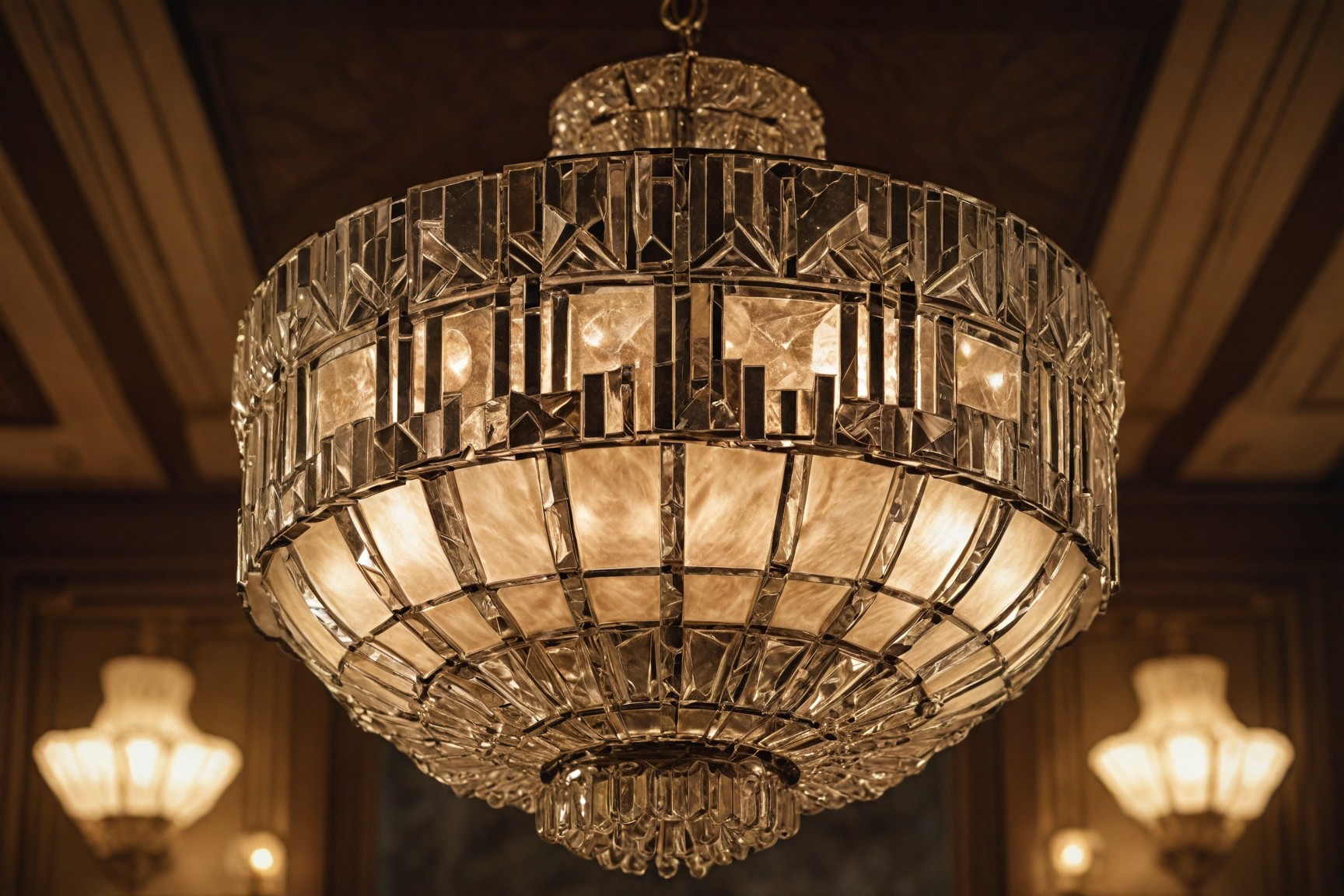
Statement lighting fixtures, such as chandeliers and sconces with bold geometric designs, are a hallmark of Art Deco that continues to influence modern design. These fixtures not only provide illumination but also serve as focal points in contemporary rooms.
Examples of Modern Design Elements Inspired by Art Deco
Geometric Wallpaper: Modern interiors often use wallpaper with bold geometric patterns, a clear influence from Art Deco design. These patterns add depth and interest to walls, creating a dynamic and stylish look.
Marble and Brass Accents: The use of marble countertops and brass fixtures in kitchens and bathrooms is a contemporary adaptation of Art Deco’s luxurious materials. These elements add a touch of glamor and elegance to modern spaces.
Curved Furniture: Sofas and armchairs with sleek, curved lines are popular in modern interiors, reflecting the streamlined shapes of Art Deco furniture. These pieces blend comfort with style, making them ideal for today’s homes.
Mirrored Surfaces: Mirrored furniture and decor items, such as side tables, cabinets, and wall art, are frequently used in modern design to enhance light and create a sense of space. This use of mirrors is a direct influence from Art Deco.
Statement Lighting: Modern chandeliers and pendant lights often feature geometric designs and luxurious materials, echoing the statement lighting of the Art Deco period. These fixtures add drama and sophistication to contemporary interiors.
Art Deco’s influence on modern design is evident in these and many other elements, showcasing its enduring appeal and versatility.
Examples of Art Deco Interiors
Art Deco design can be beautifully incorporated into various rooms in your home, creating spaces that are both luxurious and glamorous. Here are some examples of different Art Deco interiors and tips on how to recreate these looks using similar items.
Living Room
An Art Deco living room typically features bold geometric patterns, luxurious materials, and statement furniture. Key elements include mirrored coffee tables, velvet sofas, and chrome light fixtures.
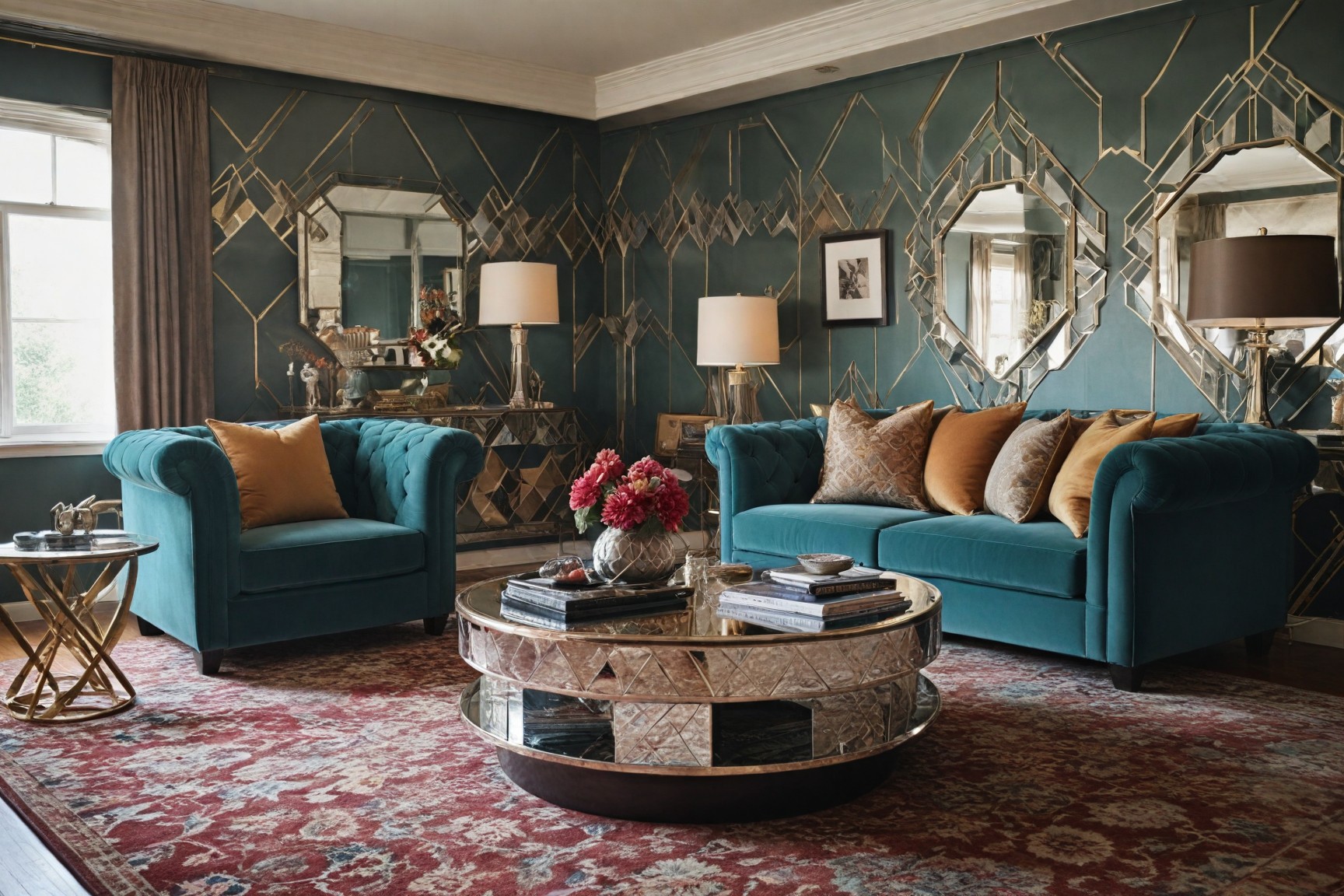
Tips for Recreating the Look:
Use geometric-patterned rugs and cushions to add visual interest.
Choose furniture with sleek lines and metallic accents.
Incorporate statement lighting, such as a crystal chandelier or a bold sconce.
Bedroom
An Art Deco bedroom exudes elegance and comfort, with elements like upholstered headboards, mirrored dressers, and luxurious bedding. The color palette often includes rich jewel tones and metallics.
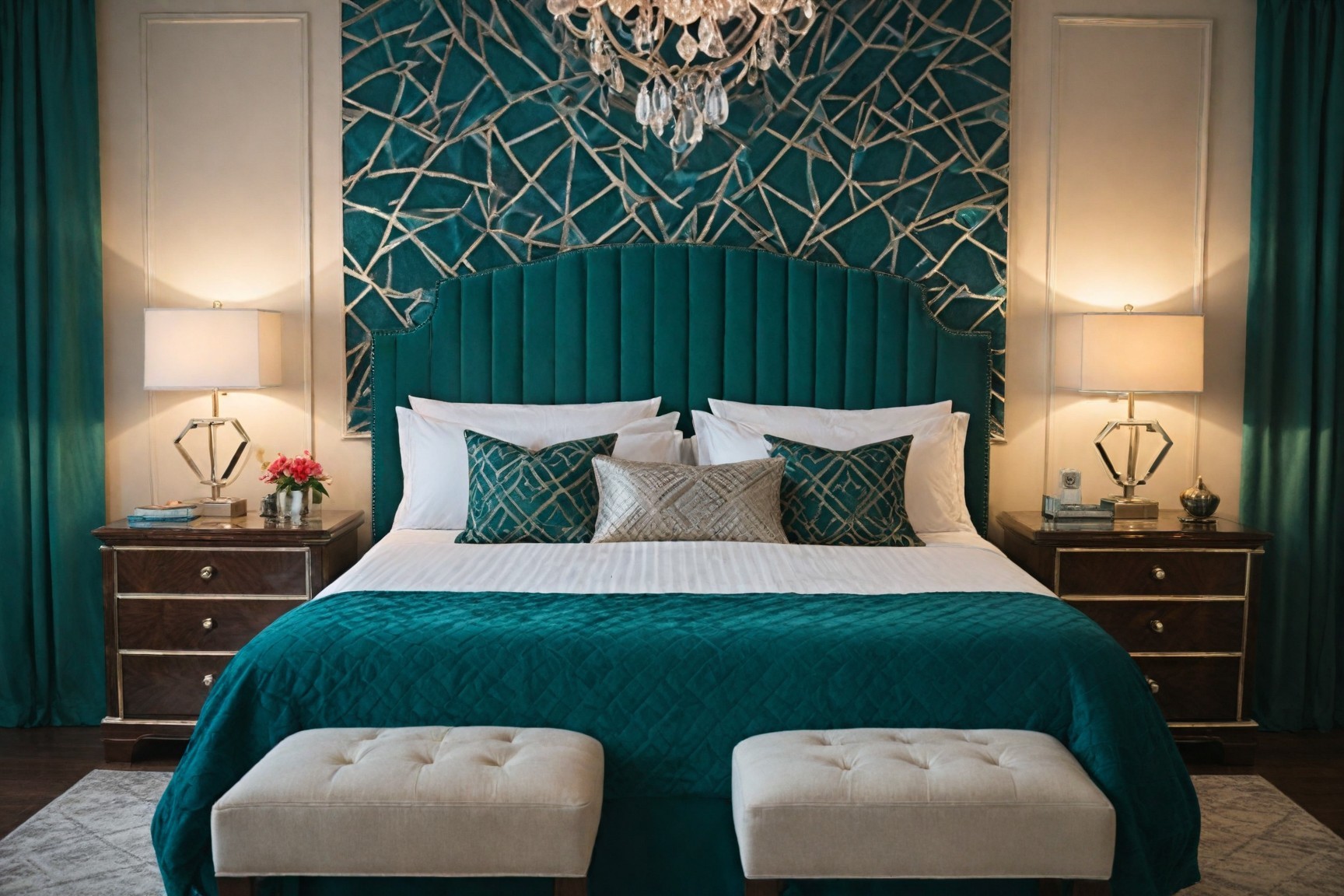
Tips for Recreating the Look:
Opt for an upholstered headboard with geometric patterns.
Use mirrored bedside tables and dressers to add a touch of glamor.
Choose bedding in rich colors like emerald green or deep blue, complemented by metallic accents.
Dining Room
An Art Deco dining room combines functionality with opulence. Common features include a sleek dining table, upholstered chairs, and bold lighting fixtures. The use of luxurious materials like marble and brass is also prevalent.
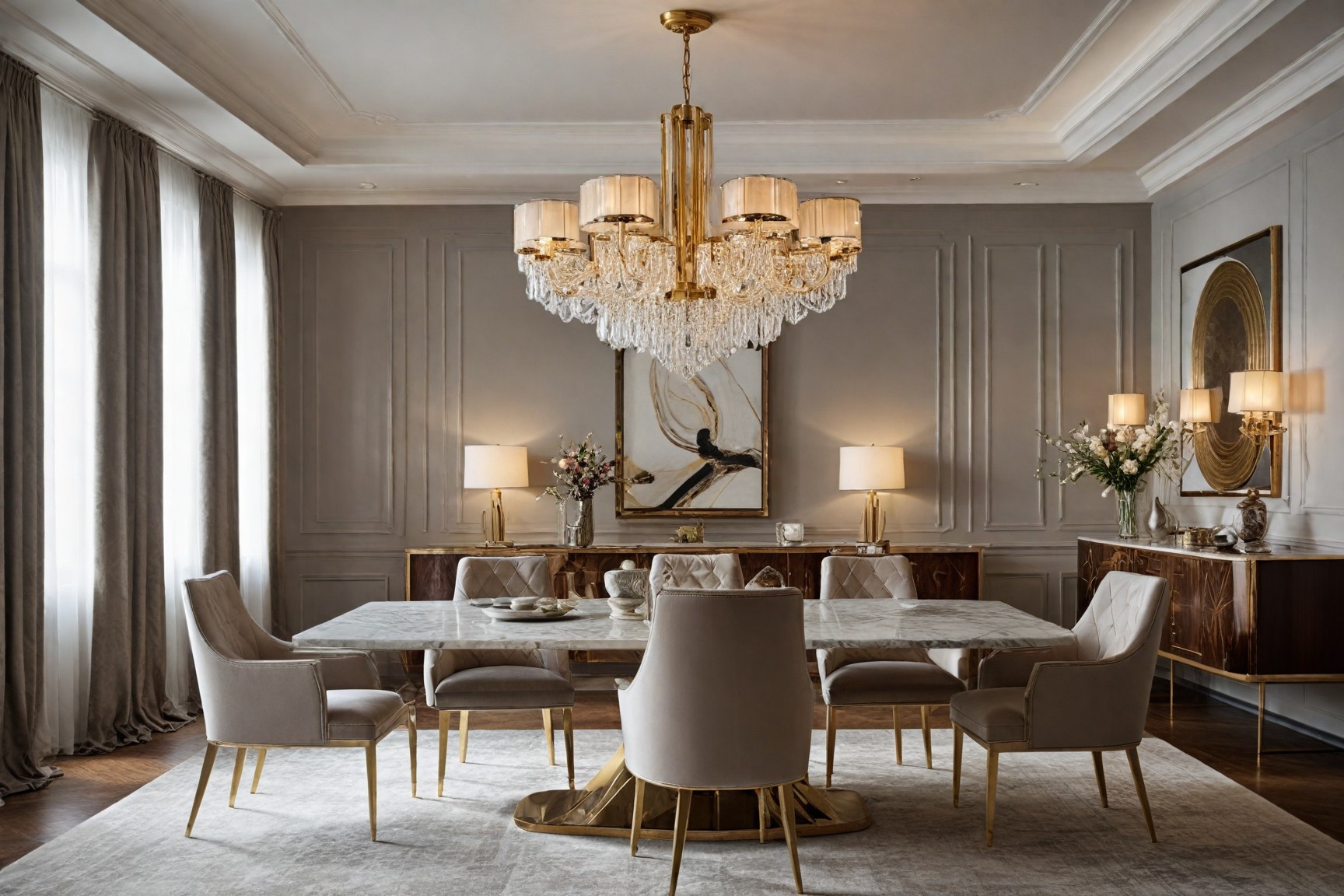
Tips for Recreating the Look:
Select a dining table with a polished finish and geometric base.
Use upholstered chairs with metallic frames.
Incorporate a statement chandelier or pendant light to serve as the room's focal point.
Kitchen
An Art Deco kitchen is both stylish and practical, featuring sleek cabinetry, marble countertops, and metallic accents. The use of geometric tiles and reflective surfaces enhances the overall aesthetic.
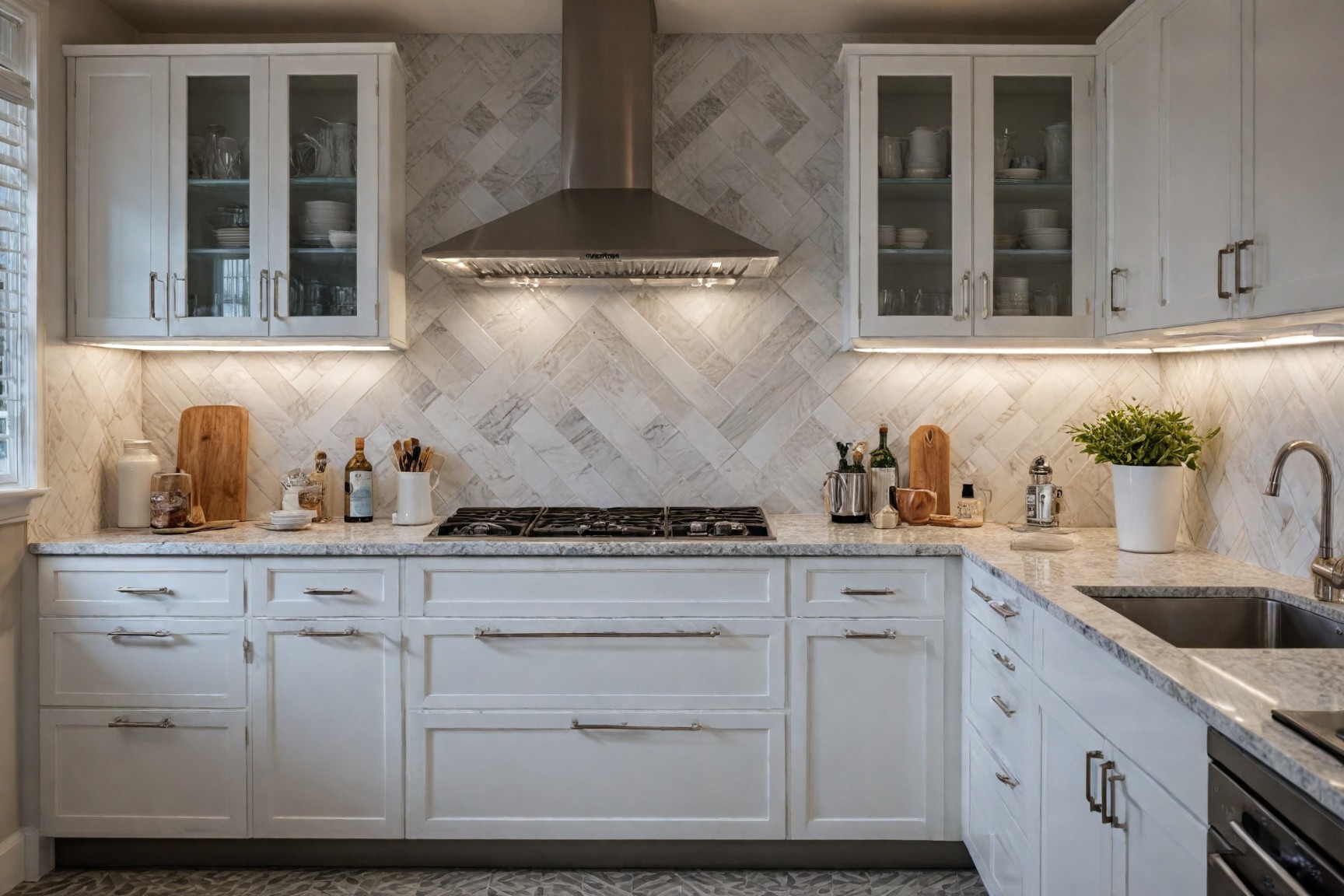
Tips for Recreating the Look:
Choose cabinetry with a high-gloss finish and simple, clean lines.
Use marble or quartz countertops to add a luxurious touch.
Incorporate geometric backsplash tiles and metallic fixtures to complete the look.
Home Office
An Art Deco home office blends productivity with elegance. Key elements include a streamlined desk, an ergonomic chair with luxurious upholstery, and decorative accessories like geometric vases and mirrored frames.
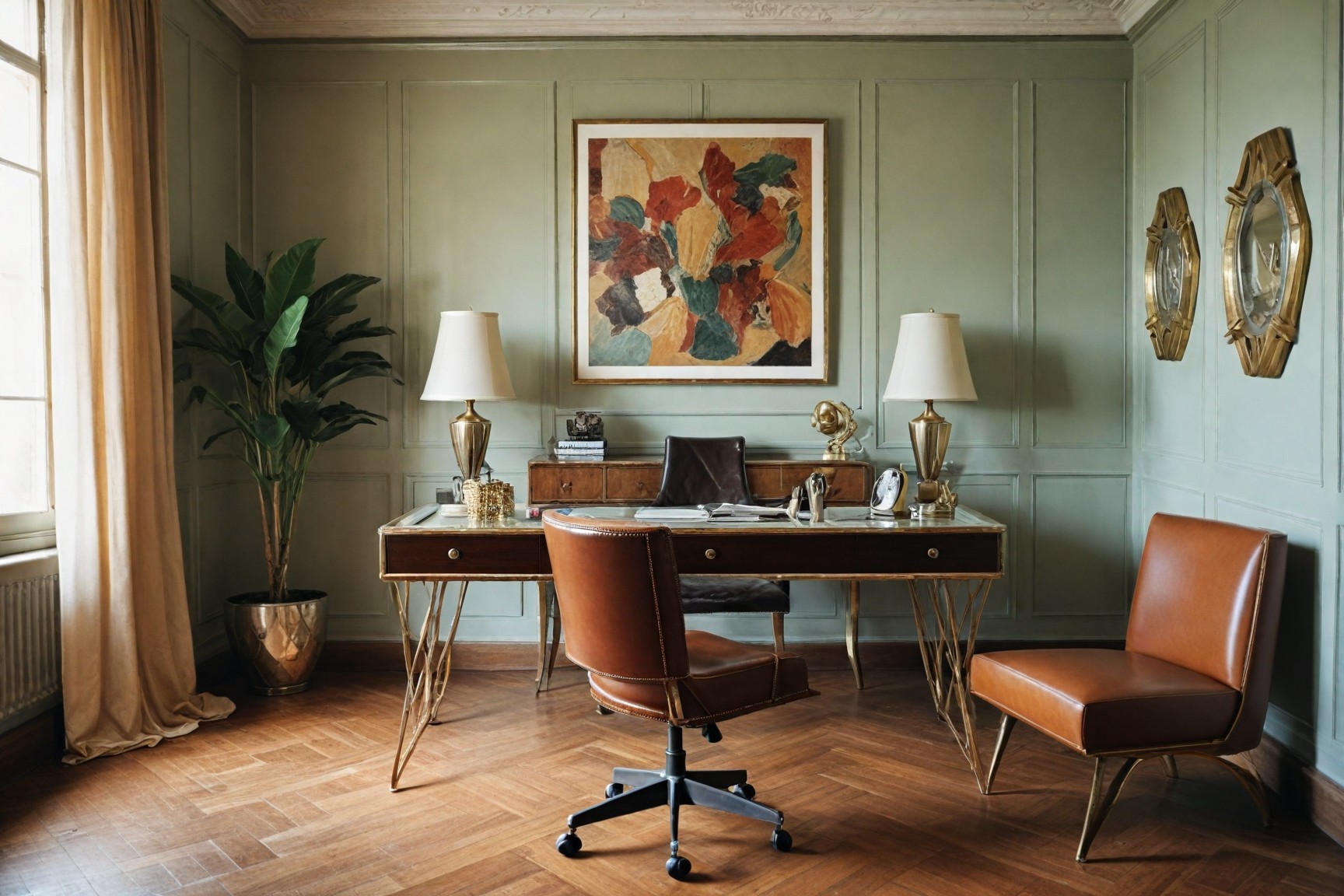
Tips for Recreating the Look:
Opt for a desk with a sleek design and metallic accents.
Choose an ergonomic chair with velvet or leather upholstery.
Decorate with geometric accessories and mirrored decor items to enhance the Art Deco vibe.
By incorporating these elements, you can create stunning Art Deco interiors that capture the essence of this timeless design style.
Embrace the Glamour of Art Deco Design with Deft
Art Deco interior design brings a touch of elegance, luxury, and boldness to any home. By incorporating key elements such as luxurious materials, bold geometric patterns, sleek surfaces, and symmetrical designs, you can transform your space into a stylish haven that captures the essence of this timeless style. From furniture selection to lighting and accessories, each detail contributes to the overall glamor and sophistication of an Art Deco interior.
Start Your Art Deco Transformation Today - Sign Up with Deft!
Discover how Deft can make your design journey seamless and enjoyable, helping you achieve the perfect blend of luxury and style.
